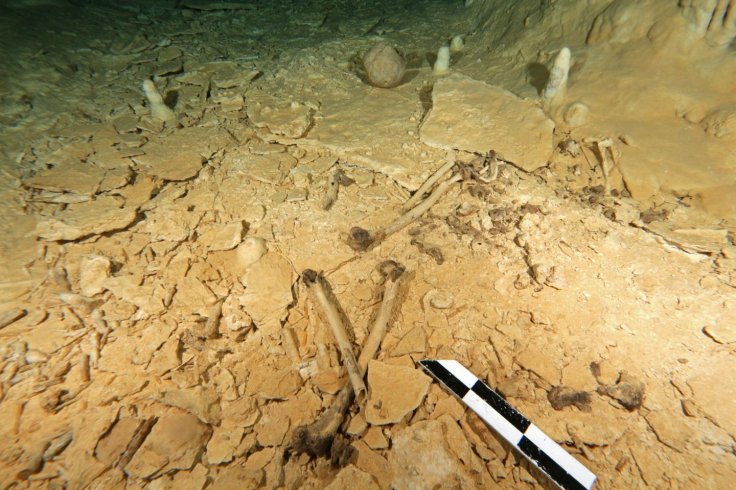A new study, published in the journal "PLOS ONE", has revealed that a prehistoric human skeleton, discovered on the Yucatán Peninsula in southern Mexico, is at least 10,000 years old. Researchers believe that it dates back to the end of the most recent ice age, the late Pleistocene.
The team of international researchers led by geoscientists from Heidelberg University used the uranium-thorium dating technique to study the remains of the approximately 30-year-old woman and determine the age of the fossil record. They believe that the skeleton provides important clues on the early settlement history of the American continent.
Skeleton was unearthed near the city of Tulúm in the Chan Hol cave

The skeleton, which is now water-filled as the result of global warming and sea-level rise approximately 8,000 years ago, was unearthed near the city of Tulúm in the Chan Hol cave. Reports said that nine other prehistoric skeletons had already been discovered in this intricate submerged cave system near the coast in the eastern part of the peninsula.
Prof Dr Wolfgang Stinnesbeck, the leader of the research team, said that though all the ten skeletons were not complete, they were well preserved. He said that those skeletons provided valuable archaeological, palaeontological and climatic information about the American continent and its first inhabitants, the Paleoindians.
Prof Stinnesbeck, who teaches and conducts research at the Institute of Earth Sciences of Heidelberg University, explained that the Tulúm skeletons exhibit round-headed - mesocephalic - cranial characteristics which are quite different from the long-headed - dolichocephalic - morphology of Paleoindians from Central Mexico and North America.
Sheds light on the settlement of the American continent

According to the researchers, the shape of the head indicates that two morphologically different groups of Paleoindians must have lived in America at the same time. The experts believe that either the groups may have reached the American continent from different geographical points of origin or a small group of early settlers may have been living in isolation on the Yucatán Peninsula and developed a different skull morphology over a short period of time.
Researchers from Liverpool John Moores University (Great Britain), Dr Silvia Gonzalez and Dr Sam Rennie said that the early settlement history of the Americas is, therefore, more complicated and may date back earlier than commonly believed.
Mexican divers Vicente Fito and Iván Hernández had recovered the remains of the woman and documented that the lady was approximately 30 years old at the time of her death. According to documentation, the woman's skull had multiple injuries, but it may not have been the cause of death.
Precise age of the skeleton
The researchers also discovered several signs of a potential treponemal bacterial infection that may have caused severe alteration of the cranial bones. The woman's teeth also had cavities, possibly due to a diet high in sugar. This is similar to that of other Tulúm skeletons, in contrast to the teeth of most Paleoindian skeletons from Central Mexico and North American. The latter's teeth are worn down and cavity-free, which suggested that they ate hard food.
The researchers used a dating method from physics based on the radioactive decay of uranium and its conversion into thorium to identify the precise date. The researchers dated the uranium-thorium isotopes of a lime crust that had grown on the finger bones in the originally dry Chan Hol cave.
Dr Norbert Franck and his team from the Institute of Environmental Physics of Heidelberg University estimated the skeleton's minimum age of 9,900 years. However, the researchers noted that the body was then already skeletonised and the prehistoric find may be older.









